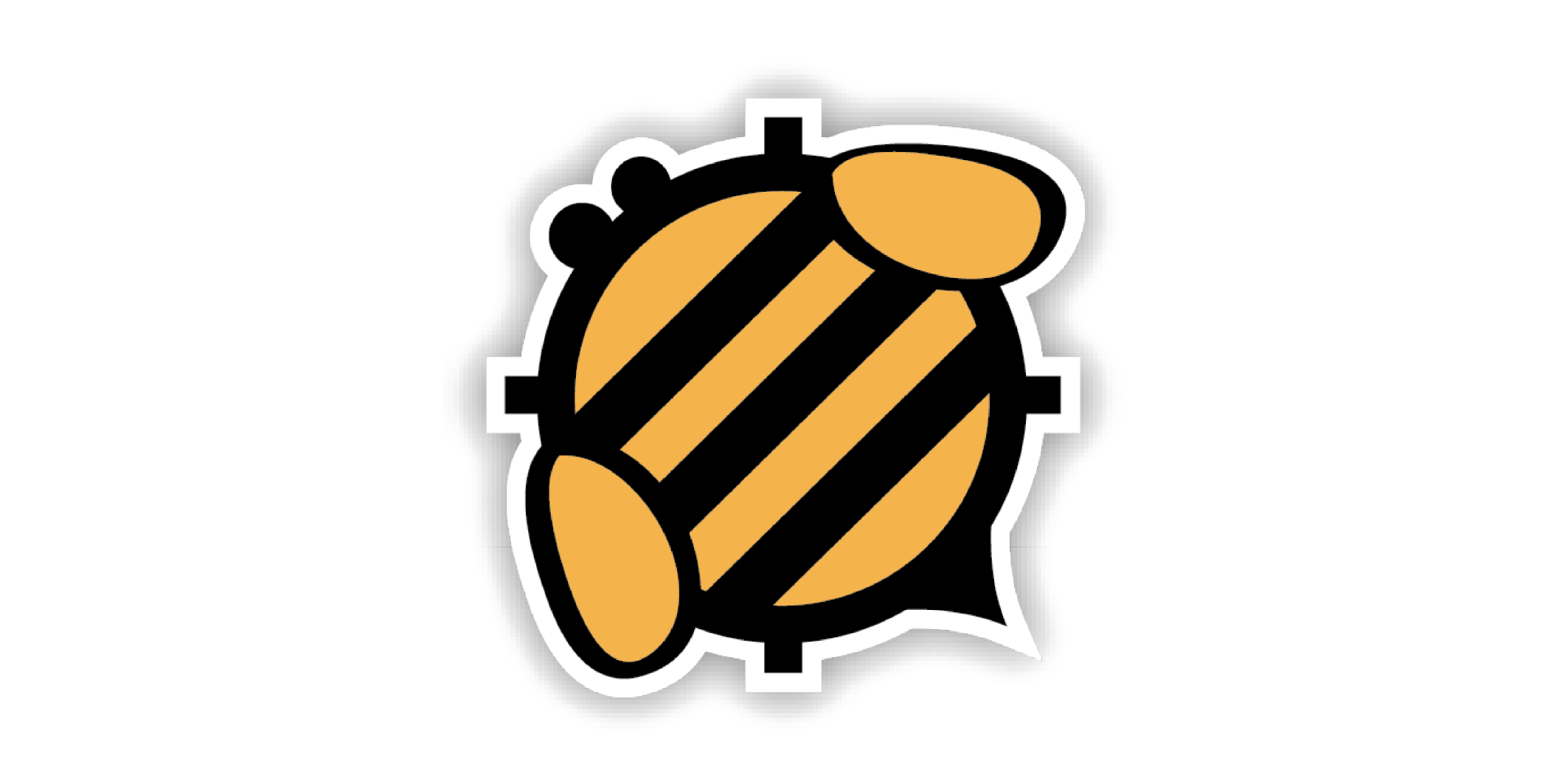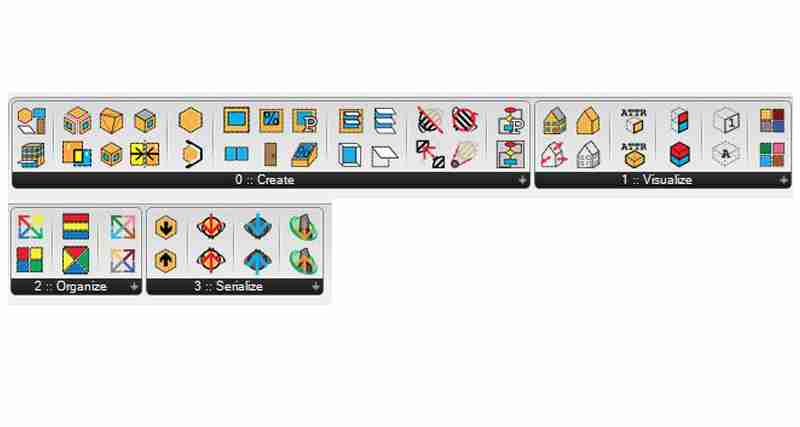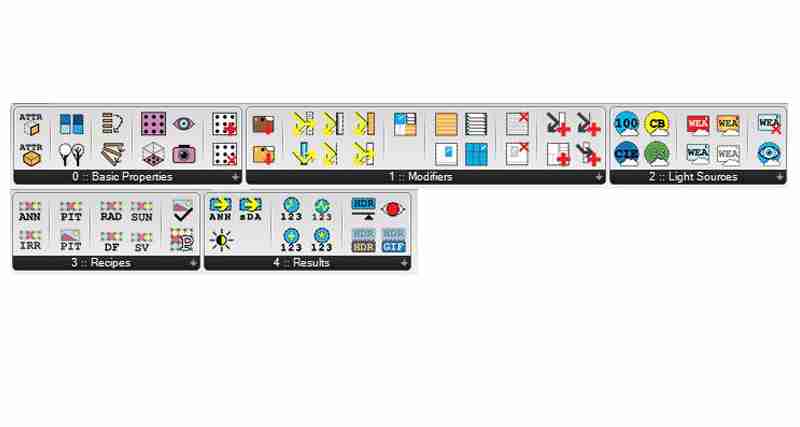Honeybee
-
Intro
-
Tutorials
-
Useful links and readings
Information
| Last updated | February 12, 2025 |
Responsible
| Faculty |
Honeybee 0/2
Honeybee
Honeybee provides analysis tools for the daylight and energy performance of spaces.
What is Honeybee?

Honeybee is a Grasshopper plug-in that provides data regarding the daylight and energy performance of the interior of a space. It uses Radiance, for running the daylight simulations, as well as Energy Plus and Open Studio, for evaluating the energy models. Unlike Ladybug which is mostly useful for evaluation of the first volumetric experiments, Honeybee is mostly useful during the mid and later stages of design.
Since Honeybee is part of the Ladybug Tools collection, you should install the whole Ladybug Tools package in order to be able to see it in your Grasshopper panels. For more details regarding the installation process see the following section:
Panel Overview
Honeybee tools are divided into three different panel groups:

A) Honeybee(HB), including the components for the creation of the analysis geometry. It is important to mention that normal Rhino geometries cannot be used directly for the simulation but you should first create the respective HB-model. Subpanels overview:
- 0.Create → Create and modify the HB model.
- 1.Visualize → Visualize and quickly check the HB objects created and the attributes assigned to them.
- 2.Organize → Group the HB objects based on their attributes.
- 3.Serialize → Convert the energy model data into different formats (.json/.pkl/.gbXML) for transfer between different simulation environments.

B) Honeybee-Radiance(HB-R), including the components for setting the radiance parameters, running the daylight simulations and processing the respective results. Subpanels overview:
- 0.Basic Properties → Create the analysis grid and assign it to the respective geometry.
- 1.Modifiers→ Assign the material properties related to Daylight Simulations.
- 2.Light Sources→ Set the sky parameters for a specific time period and location.
- 3.Recipes → Run the Radiance simulations.
- 4.Results → Post-processing of the simulation results. It can be combined with the schedules as defined in the Honeybee-Energy panel for more detailed cross-referencing of the data.

C) Honeybee-Energy(HB-E), including the components related to setting the energy parameters and running the respective simulations. Subpanels overview:
- 0.Basic Properties → Import basic energy data for the building.
- 1.Constructions → Assign the material energy properties to the HB objects.
- 2.Schedules→ Apply the occupancy schedules of the space. They can be defined based on the program type of each space or they can be custom created.
- 3.Loads → Apply the room energy loads, such as lighting, people or equipment.
- 4.HVAC → Apply HVAC systems (both mechanical and natural ventilation) to the HB rooms.
- 5.Simulate → Run Open Studio and Energy plus simulations.
- 6.Result→ Read and visualize the energy simulation results.
- 7.Thermal Map → Calculate and visualize the thermal comfort variants.
Honeybee 1/2
Tutorialslink copied
Beginner
Intermediate
Advanced
Honeybee 2/2
Useful links and readingslink copied
- Daylight simulation script runthrough (Presentation by Computational Designer & Daylight Simulations expert Mathias Sønderskov)
Forums
Examples
- Ladybug Tools Academy Daylighting
- Ladybug Tools Github with Grasshopper examples
- Hydra repository of examples
Write your feedback.
Write your feedback on "Honeybee"".
If you're providing a specific feedback to a part of the chapter, mention which part (text, image, or video) that you have specific feedback for."Thank your for your feedback.
Your feedback has been submitted successfully and is now awaiting review. We appreciate your input and will ensure it aligns with our guidelines before it’s published.
